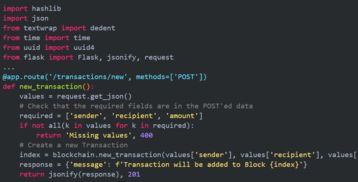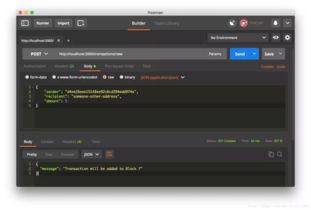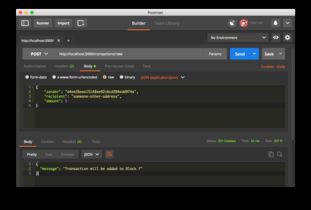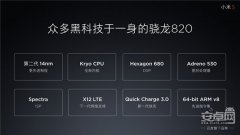
- 系统大小:0KB
- 更新时间:2024-11-28
- 界面语言:简体中文
- 授权方式:5G系统之家
- 推荐星级:
区块链开发是一个涉及多个领域的复杂过程,包括密码学、网络编程、数据库管理和软件开发等。以下是一个简单的区块链开发示例,用于演示基本的区块链结构和工作原理。
首先,我们需要定义区块链的基本组件,包括交易(Transaction)、区块(Block)和区块链(Blockchain)。
1. 交易(Transaction):区块链中的交易是用户之间转移数字资产的行为。每个交易都包含发送方、接收方和金额等信息。
2. 区块(Block):区块链中的区块是一个包含多个交易的数据结构。每个区块都有一个唯一的时间戳、一个指向前一个区块的哈希指针、一个包含多个交易的列表以及一个工作量证明(Proof of Work, PoW)哈希值。
3. 区块链(Blockchain):区块链是一个由多个区块按时间顺序连接而成的链式数据结构。每个新区块都链接到前一个区块,确保了区块链的不可篡改性。
接下来,我们将使用 Python 编写一个简单的区块链实现:
```pythonimport hashlibimport jsonfrom time import timefrom uuid import uuid4from flask import Flask, jsonify, request
class Blockchain: def __init__: self.current_transactions = self.chain = self.new_block
def new_block: block = { 'index': len 1, 'timestamp': time, 'transactions': self.current_transactions, 'proof': proof, 'previous_hash': previous_hash or self.hashqwe2, }
self.current_transactions = self.chain.append return block
@staticmethod def hash: block_string = json.dumps.encode return hashlib.sha256.hexdigest
@property def last_block: return self.chain
def new_transaction: self.current_transactions.append return self.last_block 1
app = Flask
blockchain = Blockchain
@app.routeqwe2def mine: last_block = blockchain.last_block last_proof = last_block proof = blockchain.proof_of_work
blockchain.new_transaction
previous_hash = blockchain.hash block = blockchain.new_block
response = { 'message': New Block Forged 'index': block, 'transactions': block, 'proof': block, 'previous_hash': block, } return jsonify, 200
@app.routeqwe2def new_transaction: values = request.get_json
required = if not all: return 'Missing values', 400
index = blockchain.new_transaction, values, valuesqwe2 response = {'message': f'Transaction will be added to Block {index}'} return jsonify, 201
@app.routeqwe2def full_chain: response = { 'chain': blockchain.chain, 'length': len, } return jsonify, 200
if __name__ == '__main__': app.run```
这个简单的区块链实现包括一个 Flask 应用程序,用于处理区块链的创建、交易和挖矿等操作。这个实现是一个基础版本,实际应用中需要考虑更多安全性和性能方面的优化。
Python区块链开发入门指南:探索去中心化世界的奥秘

区块链技术作为一种革命性的分布式账本技术,已经在金融、供应链、物联网等多个领域展现出巨大的潜力。Python作为一种功能强大、易于学习的编程语言,成为了区块链开发的热门选择。本文将为您介绍Python区块链开发的基础知识,帮助您开启这段激动人心的旅程。
一、区块链简介

区块链是一种去中心化的分布式账本技术,它通过加密算法和共识机制确保数据的安全性和不可篡改性。在区块链中,数据被组织成一系列的区块,每个区块包含一定数量的交易记录,并通过加密算法与前一个区块连接,形成一个链式结构。
二、Python区块链开发环境搭建

安装Python:从Python官方网站下载并安装Python,推荐使用Python 3.x版本。
安装虚拟环境:使用virtualenv或venv创建一个独立的Python环境,避免不同项目之间的依赖冲突。
三、Python区块链开发基础
在Python区块链开发中,您需要了解以下基础概念:
区块(Block):区块链的基本组成单元,包含交易记录、区块头等信息。
链(Chain):由多个区块连接而成的数据结构,记录了所有交易的历史。
交易(Transaction):区块链中的数据交换单位,包含输入、输出、签名等信息。
加密算法:用于保证区块链数据的安全性和不可篡改性,如SHA-256、ECDSA等。
四、Python区块链开发实例
以下是一个简单的Python区块链开发实例,演示了如何创建一个简单的区块链:
```python
import hashlib
import json
from time import time
class Block:
def __init__(self, index, transactions, timestamp, previous_hash):
self.index = index
self.transactions = transactions
self.timestamp = timestamp
self.previous_hash = previous_hash
self.hash = self.compute_hash()
def compute_hash(self):
block_string = json.dumps(self.__dict__, sort_keys=True)
return hashlib.sha256(block_string.encode()).hexdigest()
class Blockchain:
def __init__(self):
self.unconfirmed_transactions = []
self.chain = []
self.create_genesis_block()
def create_genesis_block(self):
genesis_block = Block(0, [], time(), \









